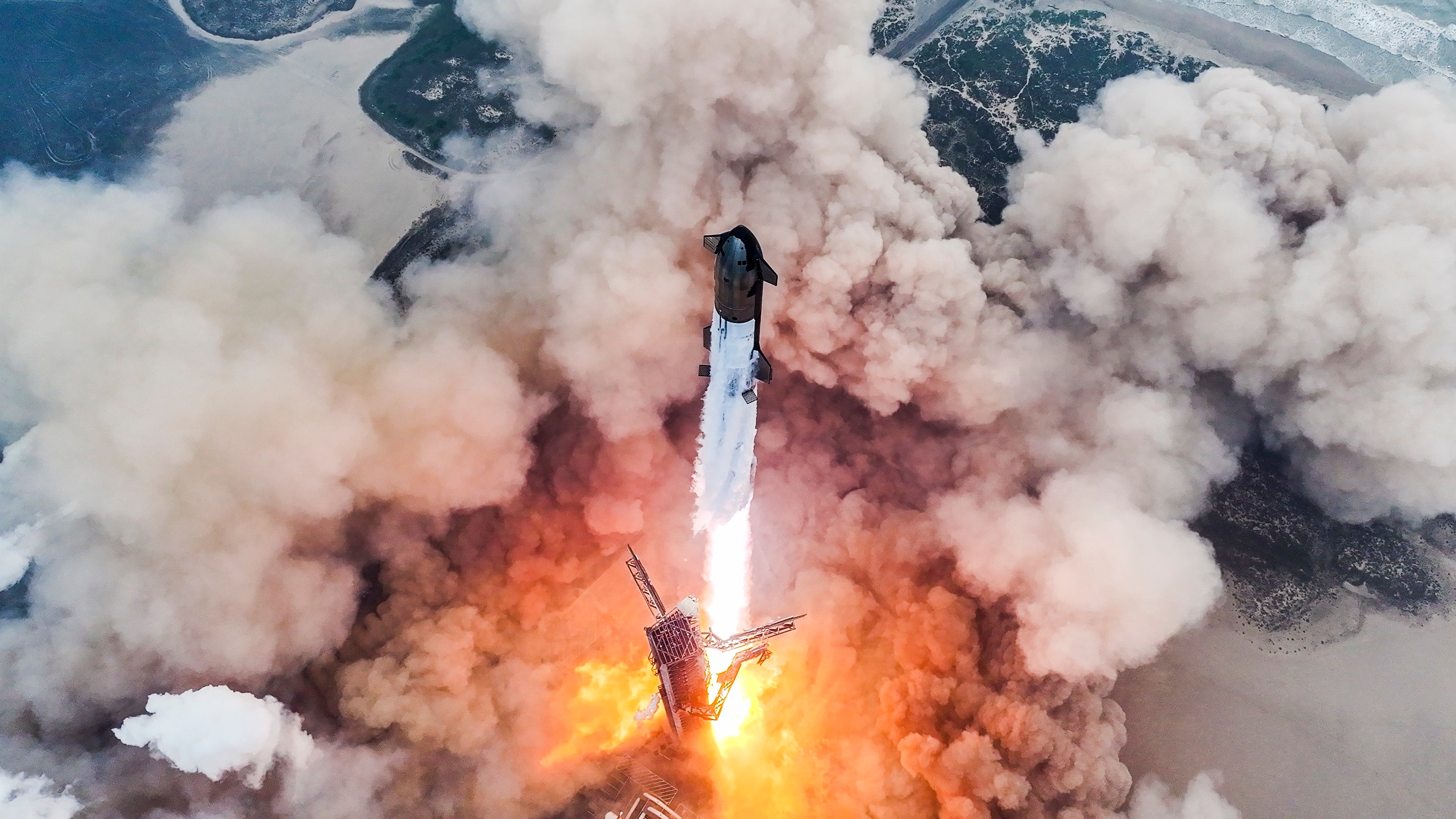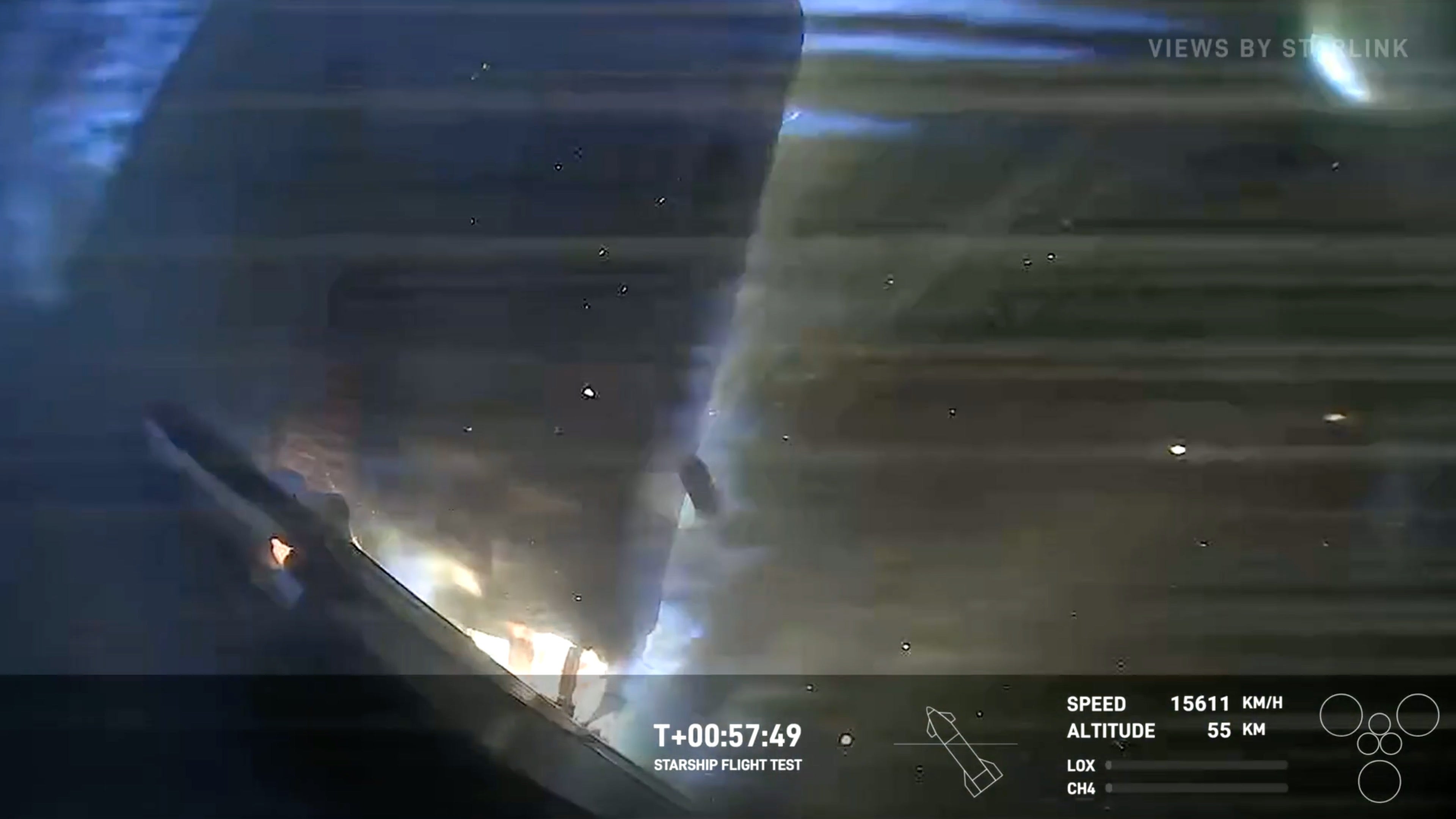
SpaceX’s Starship’s upper stage survived the fires of reentry to make a first-ever successful controlled landing, splashing down in the Indian Ocean this morning (June 6) — but not without drama, suffering damage to one of its flaps and its heat shield.
Cameras on the ship’s exterior clearly captured the growing damage during reentry, as the heat and pressure began to eat away at one of the large flaps that controls Starship’s descent. The gasps and shouts of SpaceX employees could be heard on the company’s broadcast as glowing chunks of debris flew off the flap, exposing skeletal mounting points below.
Minutes later, the gasps turned to deafening cheers as telemetry indicated that Starship had survived to reignite its engines for landing — the first time it had reached that point on a test flight. The splash of ocean water as the craft touched down could just barely be seen on the camera, whose lens had by now been nearly completely obscured by debris.

The flight, which lifted off today (June 6) at 8:50 a.m. EDT from Boca Chica, Texas, was the fourth test flight for Starship overall. The first three flights had ended with the Starship upper stage destroyed. (This is the part of the launch system that will eventually ferry astronauts to orbit, land Artemis crews on the surface of the Moon, and — in SpaceX’s plans — put humans on Mars.)
You can see the broadcast here.
The furthest the upper stage had gotten was in its third test flight, where it reached orbital velocity, but lost control and broke up during reentry. On that flight, the reusable lower stage, the Super Heavy booster, also failed in its attempt to make a test landing in the Gulf of Mexico.
Today, SpaceX succeeded on both counts. Not only did Starship reach orbital velocity on its way to its Indian Ocean splashdown, the Super Heavy booster made its a first-ever controlled splashdown in the Gulf, simulating a landing back at its launch tower.
The twin successes mark a major milestone for the company in its goal to make Starship a fully reusable launch system.
“What a day, guys,” said Dan Huot, one of the hosts on SpaceX’s broadcast. “Yeah, that was that was absolutely incredible. … We got to see it under flap control through the atmosphere. And we got a callout of our first ever Starship landing burn after a launch into space.”









